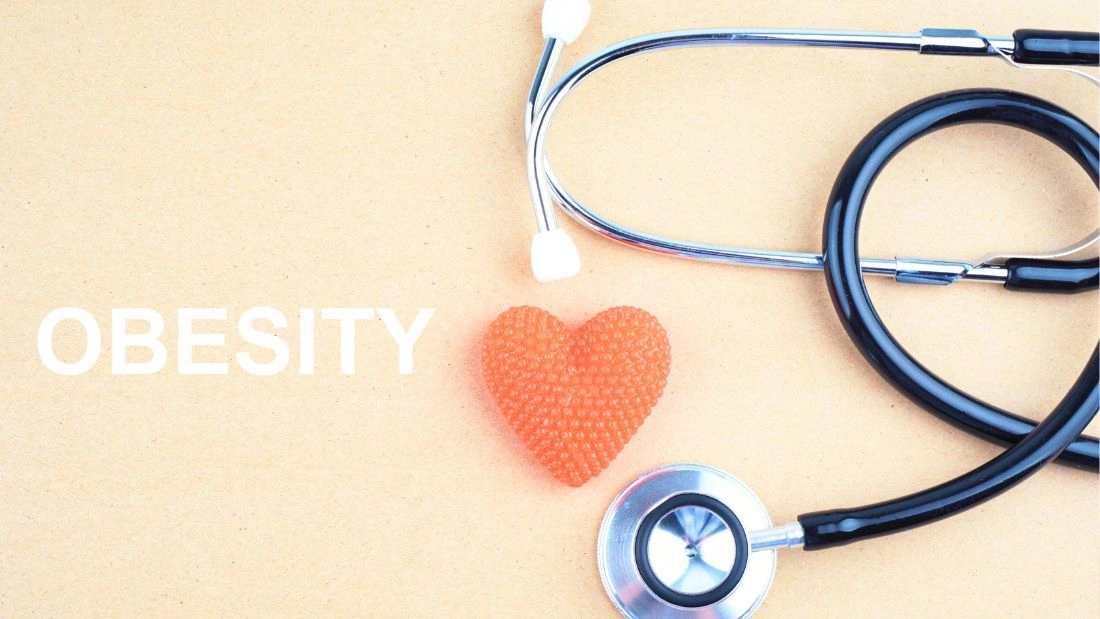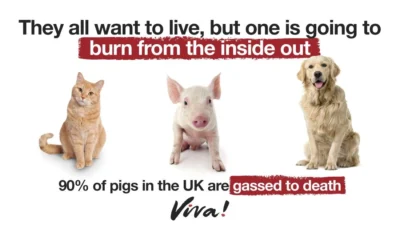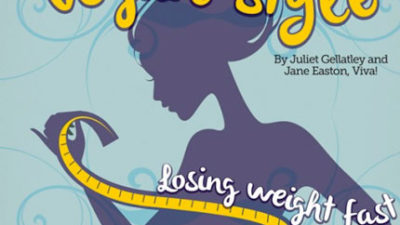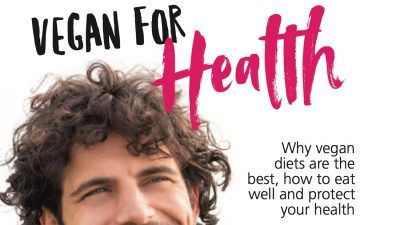Obesity

Obesity is more than just carrying a little extra weight. When you’re obese, it means your body carries so much excess fat that it alters your metabolism and affects the functioning of your immune system. It is strongly linked to a range of chronic diseases including heart disease, stroke, cancer, osteoarthritis, chronic respiratory diseases and diabetes – and it can reduce your lifespan.
Although it can be difficult to fight obesity, a vegan lifestyle offers the best tools and primes you for success. Read on to learn how and why.
Healthcare professionals define obesity as having a body mass index (BMI) of 30 or more (being overweight is characterised by a BMI between 25 and 30). However, BMI cannot tell the difference between muscle and fat – if you have a lot of muscle, you may be classed as obese despite having low body fat. In which case measuring your waist-to-hip ratio may be a more useful way to determine obesity and your risk of related conditions.
Obesity means there are large areas of fatty (adipose) tissue in your body, not just under the skin but surrounding your organs and potentially interfering with their function and with your metabolism.
Obesity is considered a disease because it alters the functioning of your whole body and can increase the risk of many other health conditions. Here’s a brief overview of the main issues it may cause.
There are many factors that might increase your chances of putting on too much weight, such as socioeconomic status, community environment, your upbringing, genetics, stress and overall health (both physical and mental). However, your diet and lifestyle choices are the main factors by far and are also the ones you have control of.
Eating habits
When it comes to diet, eating large amounts of food high in fat and sugar (junk or fast food and processed foods), frequently eating out or buying take-away food (which tends to be higher in fat and sugar than home-cooked meals), drinking too much alcohol and sugary drinks and comfort eating increases your risk of putting on too much weight.
You probably know that and perhaps some of these bad habits run in your family but – with enough willpower – you can change it. You may even be addicted to certain foods or sugar and you can also break out of that. Give any change four weeks and it becomes your new normal – smaller, partial goals are better than one unreachable big goal.
Being inactive
Lack of physical activity is another factor that often contributes to obesity. Many of us have desk jobs or work where we don’t move much during working hours. If you also sit during your commute and relax by watching TV or spending time on your computer or phone, you can easily become much less physically active than what’s considered healthy. A sedentary lifestyle is also suited to snacking more and so it may create a vicious cycle of eating too much while moving too little.
You don’t need to live on salads and run marathons to be healthy. In fact, that combination is certainly not a good idea. But having a balanced diet is important and so is engaging in physical activity, even if it’s just a daily walk. It supports both your physical and mental health. See more on gentle exercising below.
Diet and lifestyle modifications, along with mental health support, are paramount to treating obesity and reducing the health risks associated with it. A wholesome vegan diet can be a true life-changer for obese people because it not only makes us healthier and achieves gradual weight-loss, it does that without portion restriction and cake isn’t off limits.
Across scientific studies, vegan diets are the most successful in achieving healthy weight loss – more effective than vegetarian and other diets. For example, in a 16-week trial of a low-fat vegan diet in overweight and obese people, participants lost around six kilograms (just under one stone), their metabolism slightly increased (so they would naturally burn more energy), they reduced the amount of fat inside their livers by a third and lost 10 per cent of fat from their muscles, their insulin sensitivity improved (important for diabetes prevention) and their cholesterol levels dropped.
Perhaps you’d want a more rapid weight loss, but that wouldn’t be healthy or sustainable. Most people who lose large amounts of weight quickly end up with the yo-yo effect – putting weight back on because their diet and lifestyle changes weren’t sustainable for them.
Because a healthy vegan diet is based on wholefoods, it improves how your body works and regulates your energy intake:
- Plant-based foods are rich in fibre – plentiful fibre intake increases food bulk in the digestive system and makes you feel fuller for longer; it also ensures slower energy release from foods so you don’t experience sudden energy highs and lows (as you would after eating sugary foods and/or refined carbohydrates such as white bread, cakes and biscuits).
- Most plant-based foods are lower in fat than animal products and contain healthier fats – that not only naturally reduces your fat intake but also makes your body work better. Plants mostly contain healthy unsaturated fats and are low in cholesterol-raising saturated fats – this scenario helps reduce your risk of heart disease.
- Plant wholefoods are nutrient-rich – aside from fibre and healthy fats, plants contain plenty of protein, complex carbohydrates, vitamins and minerals, which are not only good for you, you need them for your body to work at its best. It’s not unusual for obese people to be malnourished – lacking vital vitamins and minerals for example. A balanced vegan diet is very nutritious and boosts your health while helping you lose weight.
- Plants supply plenty of antioxidants – an increased intake of antioxidants improves your metabolism, reduces inflammation and supports beneficial gut bacteria that have multiple positive effects on your health.
Just as joining a gym but never going will not help you get fit, going vegan but living on junk food will not help you lose weight. Don’t forget that chips, biscuits, sweets, deep-fried snacks and ice-cream are or can be vegan but building your menu from these items certainly won’t help you become any healthier.
A balanced vegan diet is based on pulses, wholegrains, fruits, veggies, nuts and seeds, and accompanied by vitamin B12 and D supplements. See the next sections for more information.
1) Eat plant-based, mostly wholefoods
– every day, you should eat a variety of plant wholefoods:
-
- pulses for protein, minerals and healthy carbohydrates (peas, beans, lentils, chickpeas, soya) and products made from them, eg hummus, falafel, tofu, tempeh
- wholegrains for healthy carbohydrates, B vitamins and protein (wholemeal bread, wholewheat pasta, oats, brown rice, quinoa)
- fruit and vegetables for vitamins. minerals and antioxidants (fresh, blended in a smoothie, steamed, boiled, baked)
- nuts and seeds for protein, healthy fats, vitamins and minerals
Add plant milks and yoghurts, healthy snack bars made of dried fruit and nuts and, if you want, some mock meats a couple of times a week. Top it up with vitamin B12 every day and D if you need in in the winter (or all year round if you cover up) and a good source of omega-3 fats and you have a healthy diet that will effortlessly help you become lighter and healthier!
2) Choose your treats wisely
– if you try to be super-healthy and become too strict with your diet, you’ll likely fail and feel discouraged. It’s best to come up with some half-healthy treats that will satisfy your cravings while not undermining your overall diet. These may be, for example, a couple of squares of dark chocolate with nuts and dried fruit, wholemeal digestives, chocolate-covered rice cakes, various chilled vegan desserts, lentil crisps, roasted salted nuts and olives, vegan pizza or ice cream. Once in a while you can even enjoy a slice of cake.
Remember that these are treats only – to be eaten in small portions and not three times a day!
3) Distribute your meals evenly
– skipping meals tends to lead to overeating later. If you plan your meals and snacks so you eat every two or three hours, you should have a steady supply of energy and not feel ravenous before your next meal.
4) Hydrate healthily
– proper hydration is very important, especially when you’re making healthy changes in your life. Not drinking enough water can make you feel tired, headachey and even peckish. It’s also bad for your kidneys that are already under stress in obese people.
Healthy drinks include water, herbal tea, water infused with fruit and ginger or mint, two to three (maximum) cups of tea or coffee and – not more than once a day –diluted fruit juice.
5) Move about
– many recommendations for general fitness may not apply to you because your body has different requirements and limitations than an average person. If you experience pain or shortness of breath, there’s no point in making yourself suffer through a gym session. Begin slowly, gradually building up how long and how much you exercise.
A good start would be a daily walk, choosing to take stairs (even just going up one floor), gentle yoga with modifications, a DIY project that would make you move about and perhaps joining the gym for access to some more gentle activities, eg exercise bikes.
Virtually every weight-loss programme suggests a low-calorie diet and eating less than 2,000 calories a day. It may work for some people but not everyone is suited to calorie counting and it may trigger unhealthy obsessive behaviours.
We promote a healthier approach. Eat plants, mostly wholefoods, don’t add too much fat/oil and don’t rely on ready-made meals. Here are two sample meal plans for healthy weight loss:
Sadly, many doctors don’t realise that exercise recommendations certainly aren’t ‘one size fits all’ and may suggest some utterly unsuitable activities. You have to be careful about your joints and back to avoid not just pain but also injuries.
Ideally, you should engage in some physical activity daily – 30 minutes is enough and you can even break it down into two 15 minute sessions. If you do housework, such as hoovering or dusting, that counts too.
Take 30 minutes as your goal to work up to and if you start feeling like you want to do more, you can make your exercise longer once you are more used to your new lifestyle. Be mindful of your body’s needs and limitations and adapt what you’re doing accordingly. That doesn’t mean you should stop when you get slightly tired but neither should you push yourself to the point of fainting, falling or suffering through a lot of pain.
Here are some activities that might be right for you:
Walking – an ideal activity as you can do it anywhere, you’re in control of how fast and how far you go and you can gradually build it up.
Cycling – a great activity that spares your joints as there’s no hard impact. Exercise bikes are excellent as you can cycle in any weather and watch your favourite show or listen to a podcast.
Cross trainer – another exercise machine found in the gym – this one trains your upper and lower body and doesn’t put any significant stress on your joints because your limbs make an elliptical movement – you move your feet in an oval pattern while using handles to work your arms. It’s similar to a stepper but much better. You can go as gently and slowly as you need to and don’t worry, they are popular with people of all shapes, sizes and abilities.
Yoga – slow paced yoga classes are ideal for beginners, no matter what your body shape is. You work with your own weight and gradually increase your mobility, strength and stability. If you prefer, you can choose online yoga videos to follow. Just remember to take it slowly and listen to your body.
Swimming – water can be your best support as it literally takes weight off your joints. Many people are self-conscious and let that stop them from swimming – try to not let that stop you. Moving about in water can truly bring huge benefits to your health.
Gardening or DIY – these activities don’t necessarily train your body but they make you more active and give you a positive focus point.







